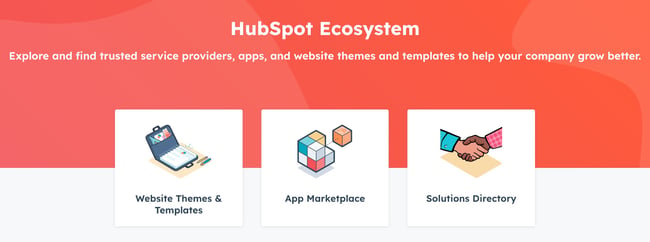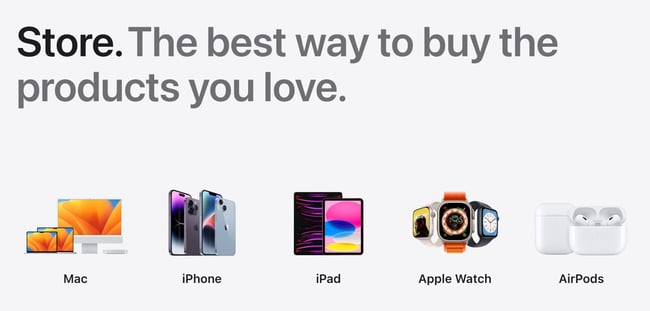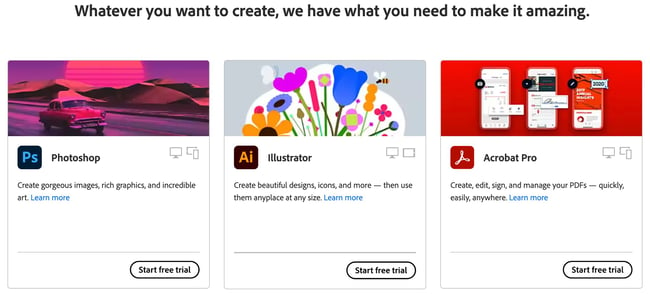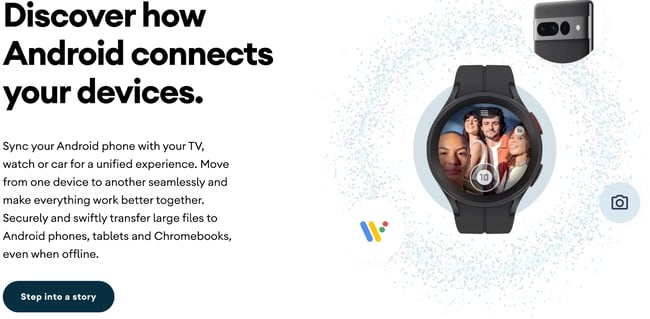How to Build a Product Ecosystem Buyers Will Want to Be In
A product ecosystem functions in a very similar way to an environmental ecosystem. Like the symbiotic relationship found in nature, a product ecosystem is when products can coexist in a way that’s beneficial for the customer (not to mention,...

A product ecosystem functions in a very similar way to an environmental ecosystem. Like the symbiotic relationship found in nature, a product ecosystem is when products can coexist in a way that’s beneficial for the customer (not to mention, brings in more revenue for the business). In this post, we’ll take a look at how to build successful product ecosystems and why buyers want to be a part of them. Skip to: A product ecosystem is created when a business offers multiple complementary products or services for their customers to purchase and use in tandem. The purpose of a product ecosystem is to simplify the lives of customers by providing products or services that can be used for a variety of needs. These products or services can coexist peacefully and integrate or connect with each other which makes them more powerful and valuable for users. The process of building a successful product ecosystem is valuable for businesses for numerous reasons — product ecosystems work ... Let’s dive deeper into how you can create a product ecosystem of your own. You can build your product ecosystem in a number of ways. Below, we’ll review four of the most common steps when doing so. These steps are all-encompassing so you can incorporate them into your process no matter the industry you’re in. For a product ecosystem to be beneficial to buyers, you need to ensure your products or services are effectively solve the challenges and pain points of your target audience. To do this, listen to your customers. Ask them what they’re missing in your current products and services; ask them about the work they do on a daily basis so you can determine the best ways to meet and exceed their needs with the support of your product ecosystem. Here are some ways to develop a stronger understanding of your customers, and listen to their needs, to ensure your product ecosystem is valuable: Part of the reason buyers want to be in a product ecosystem is the ease that comes from using the products of a single brand. For example, as a HubSpot user, you can manage your entire business, across all departments, within the one system. As the businesses of HubSpot customers grow and their needs expand, they can easily purchase or connect to additional products, tools, or Hubs within the software in mere seconds. By making connections and integrations simple, your product ecosystem becomes more valuable for customers. This also helps you improve your brand loyalty, as customers will be less likely to get frustrated and spend time identifying the product ecosystems of other businesses that are simpler and more efficient. As mentioned, your first step in creating a product ecosystem requires you to ask for, and listen to, customer feedback. Continue to do this as your ecosystem evolves and expands, not just as you make your initial plans to build it. This way, you create products within the ecosystem that effectively solve the needs of your customers. It will also help you update and improve individual parts of your ecosystem as needed in a way that makes being a part of it valuable for customers. By working through the above steps, you’ll likely have no issue achieving this final step — however, it’s still important to reiterate the need for your product ecosystem to be valuable for customers to join. Think about it — your ecosystem won’t succeed among your target audience and customers if it includes products with functions and features that aren’t cohesive or powerful when grouped together. After all, this is how any ecosystem functions — through the collaboration of each piece and member. Next, consider some examples of successful ecosystems to gain a better understanding of the way in which they function. HubSpot’s product ecosystem enables users to connect external services to its platform, in addition to offering a suite of its own software solutions, to help customers grow better. HubSpot’s CRM helps users track their contact and customer data all in one place. For developers, HubSpot’s API lets teams build their own custom integrations based on their brand’s needs. Websites and apps can be built within the platform, plus the ecosystem boasts numerous tools, apps, and vetted service providers to help your business scale. From sales to marketing to service and development, the HubSpot ecosystem offers solutions that work together to remove friction so you can focus on what matters most to your business. Apple has a host of products that connect with each other to effectively and easily meet the technological needs of its target audience. For example, you plug your iPhone into your MacBook Pro to view all details related to the phone including your storage, different aspects of your phone’s history, your music library, and more via your laptop. And speaking of your music, connect your AirPods in just seconds to your iPhone and your MacBook for seamless listening opportunities cross-device. Then, lock your phone and close your MacBook Pro prior to heading out on a run. Throw on your Apple Watch so you can leave those larger devices at home while maintaining access to your music with your AirPods. Don’t worry, your Apple Watch will still notify you of your call, text, and email notifications while out on the running trail. Meanwhile, your mileage, time, heart rate, and other workout details will also be recorded while you’re running. Then, when you return from your run, head into your home office and plug your Apple Watch into your iMac to view your workout summary on the easy-to-view display screen. While we’ve only mentioned a few, all of the products within Apple’s ecosystem coexist to improve their value to and simplify the lives of its customers. Square has long been a popular POS system for small businesses. From retail to restaurants to ecommerce, Square offered a simple solution for businesses to accept and process payments. Now, their offerings have expanded to a full service payment processing solution. In addition to the POS systems available to businesses, they now have access to: So business owners can not only use their POS system and inventory tools, but meet most of their operation needs in one place. Most of us are familiar with Adobe Photoshop and Acrobat PDF reader. However, they have more products in their roster, the Creative Cloud. For those in creative fields, the Creative Cloud provides numerous apps to tackle all of your projects: Whether you’re a student, running a business, or just like to dabble in different creative mediums, the Adobe Creative Suite offers a variety of programs to suit your needs. In addition to software, Adobe also offers a series of tools that make it easier for you to collaborate with others and manage your projects to provide a seamless experience for users. We’re all familiar with Google’s search engine and their G-suite (Google Drive, photos, collaboration tools, and email), but the company is also pivoting to build an ecosystem similar to Apple’s. Google’s ecosystem focuses on the Android OS, Android TV, Chrome OS, and smartwatch. With these product and software options, the brand can branch out to offer a variety of accessories and services connected to each. With the tagline “Better Together,” you can see that the brand has ramped up efforts to provide better connectivity and functionality across all of its products and services. Building a product ecosystem your buyers want to be a part of is how your business can improve loyalty among customers, boost revenue, improve retention rates, and become better known as an industry leader. So, think about the needs of your customers, the ways in which you can better serve them with your ecosystem, and how an ecosystem can make your product line more valuable. Editor's note: This article was originally published in January 2020 and has been updated for comprehensiveness.
What is a product ecosystem?
Why is a product ecosystem valuable?
How to Build a Product Ecosystem
1. Listen to your customers.
2. Simplify the connections within your product ecosystem.
3. Consistently update and improve your product ecosystem.
4. Make joining your ecosystem valuable for customers.
Product Ecosystem Examples
1. Hubspot
2. Apple
3. Square
4. Adobe
5. Google
Build Your Product Ecosystem

 Troov
Troov ![Free Product Marketing Kit [Free Templates]](https://no-cache.hubspot.com/cta/default/53/08b5e1f4-5d26-405b-b986-29c99bd0cb14.png)






































